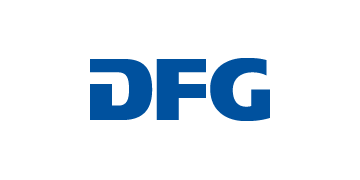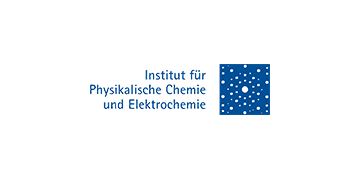| Theme | Industry 4.0 |
|---|---|
| Project title | Development of a TEG based on Ca3Co4O9 in screen printing process (DruckTEG) |
| Project duration | 01.10.2017 – 31.12.2019 |
| Download | |
| Press release | |
| Podcast |
For the operation of wireless sensor networks, energy harvesting systems are often required. Those systems ensure the functionality, where the supply of the nodes can't be realized by a supply network or battery storage. The effects used in this process are aimed at converting energy from the environment and making it usable for the operation of measuring, processing and transmitting electronics. Thermoelectric generators (TEG) use the material-specific Seebeck effect to generate an electrical power from an existing temperature gradient.
The research project investigates the use of an alternative thermoelectric material based on calcium cobalt oxide. Among the commercial TEGs, materials such as bismuthelluride dominate - the telluride contained therein is toxic and is counted as a rare-earth element. Calcium cobalt oxide offers a non-toxic, easily producible alternative with good thermoelectric properties. The aim is to develop a paste for use in an inexpensive and scalable screen printing process. By means of systematic tests and simulation processes, the material and geometry are to be adapted to the process and optimized for maximum output. The project is carried out in cooperation with the Institute of Physical Chemistry and Electrochemistry at the Leibniz Universität Hannover.
Publications about the project
Geometry, design, and processing in addition to the thermoelectric material properties have a significant influence on the economic efficiency and performance of thermoelectric generators (TEGs). While conventional BULK TEGs are elaborate to manufacture and allow only limited variations in geometry, printed TEGs are often restricted in their application and processing temperature due to the use of organic materials. In this work, a proof-of-concept for fabricating modular, customizable, and temperature-stable TEGs is demonstrated by applying an alternative laser process. For this purpose, low temperature cofired ceramics substrates were coated over a large area, freely structured and cut without masks by a laser and sintered to a solid structure in a single optimized thermal post-processing. A scalable design with complex geometry and large cooling surface for application on a hot shaft was realized to prove feasibility.
thermoelectric, printed electronic, laser structuring, printed ceramics, spray coating
The manufacturing technology of thermoelectric materials is laborious and expensive often including complex and time-intensive preparation steps. In this work, a laser sintering process of the oxide-based thermoelectric material Ca3Co4O9 is investigated. Samples based on spray-coated Ca3Co4O9 were prepared and subsequently sintered under various laser parameters and investigated in terms of the microstructure and thermoelectric properties. Here, the combination of laser sintering and subsequent thermal sintering proved to be a promising concept for the preparation of thermoelectric films. Laser sintering can thus make a great contribution in improving the processing of thermoelectric materials, especially when films are applied that cannot be sintered under pressure.
thermoelectric, laser sintering
Processing technology to improve the manufacturing of thermoelectric generators (TEGs) is a growing field of research. In this paper, an adaptable and scalable process comprising spray-coating and laser structuring for fast and easy TEG manufacturing is presented. The developed process combines additive and subtractive processing technology towards an adaptable ceramic-based TEG, which is applicable at high temperatures and shows a high optimization potential. As a prototype, a TEG based on Ca3Co4O9 (CCO) and Ag on a ceramic substrate was prepared. Microstructural and thermoelectric characterization is shown, reaching up to 1.65 μW cm−2 at 673 K and a ΔT of 100 K. The high controllability of the developed process also enables adaptation for different kinds of thermoelectric materials.
thermoelectric, laser structuring
The processing of ceramics is an important technology for various technical applications. In this paper, a highly
controllable process consisting of spray-coating and laser structuring to design ceramic layers on a versatile
applicable substrate is presented. A thermoelectric oxide, Ca3Co4O9, which is a type of thermoelectric material,
is used in the process and applied to a flexible ceramic substrate. The resulting structures have highly controllable
shapes and good thermoelectric properties, and they can be used to produce a printable thermoelectric
generator (TEG). The use of a flexible ceramic substrate and the high feasibility of the process lead to a universally
applicable procedure that can be used to process ceramics with unique structures and designs.
thermoelectric, printed electronic, laser structuring, printed ceramics, spray coating





